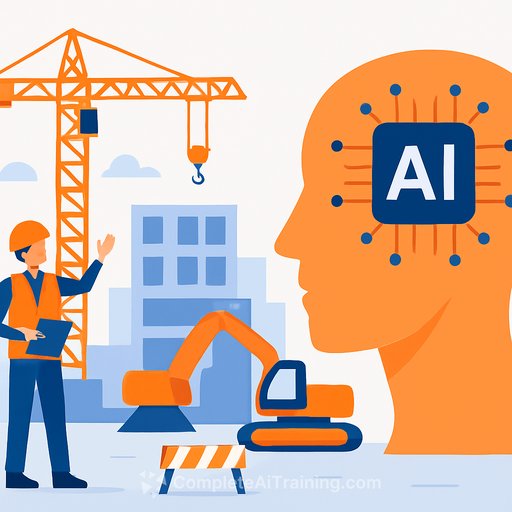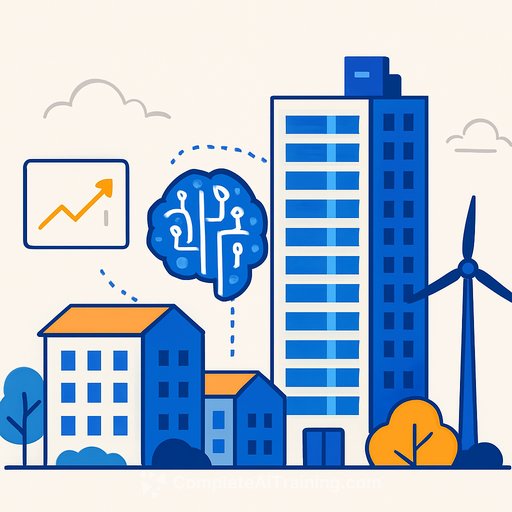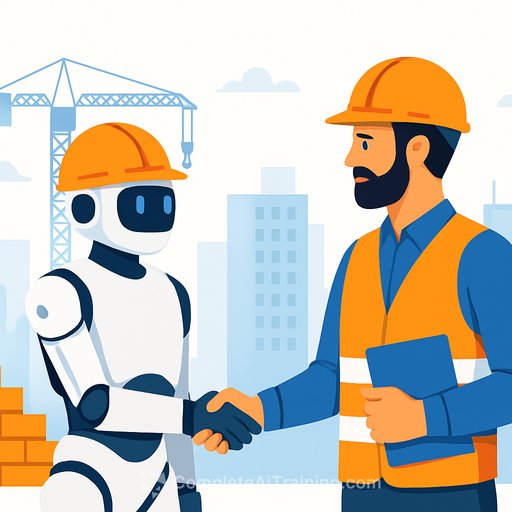How construction sites could finally get quieter
Jack-hammering, grinding, drilling-loud, constant, and hard to manage. Now there's a way to identify those sounds in real time and act on them before complaints or compliance issues land on your desk.
SiteHive's Audio Classifier uses AI to recognise and measure specific construction noises as they happen. It brings the process online: no more waiting weeks for a consultant's report to confirm what you already suspected.
Why noise management needs a rethink
Safe Work Australia sets clear thresholds: keep workers below 85 dB averaged over eight hours, and never exceed a 140 dB peak. Anything higher puts hearing at risk and exposes projects to penalties and claims.
There's also the community to consider. Most sites are restricted to standard working hours (often 7am-6pm on weekdays) unless a permit says otherwise. If your first signal is a complaint, you're already on the back foot.
What SiteHive built
The Audio Classifier pairs integrated hardware with AI to detect and label construction noise types-like jack-hammering-in real time. High-fidelity recordings are matched against a growing database of thousands of construction and urban sounds.
Under the hood, the team uses an audio spectrogram transformer model trained and refined with industry input. In its first year, the system has already classified more than 11 million audio files and is now embedded across hundreds of projects in Australia and New Zealand.
Context beats raw decibels
Traditional monitoring gives you a number. Useful, but not enough. SiteHive wraps that number in context so teams can act fast and confidently.
- Multi-sensor devices: measure noise and dust together.
- Microphone arrays: indicate where a sound is coming from.
- Cameras: add visual confirmation when needed.
- Weather data: track how conditions move dust and amplify sound.
The result is simple: you know what happened, where it came from, and whether it was your site or not-while the work is still underway.
Compliance without the complexity
Every project has its own environmental impact statement, management plan, and site-specific constraints. The platform helps teams operationalise those documents instead of chasing them.
Updates roll out under a single subscription model, so projects benefit from new features during delivery without a cost blowout. Teams stay aligned, and managers get evidence-backed assurance that controls are in place.
Built with industry, proven on major jobs
Founders Ben Cooper-Woolley and Adam Ferguson met through the Antler Start-Up Incubator in 2019. Their first prototype-Hexanode-packed noise, dust, and vibration sensors into a compact device and made it onto live sites within months.
Since then, SiteHive's systems have supported major projects including Western Sydney Airport, Sydney Fish Markets, Allianz Stadium, and the Western Harbour Tunnel. Large contractors such as Laing O'Rourke, CPB Contractors, and John Holland were early adopters.
Today, the company has around a thousand devices in the field across construction, local councils, courts, quarries, and operational facilities. The Audio Classifier also took out the AFR BOSS 2025 Most Innovative Companies award in the Property, Construction and Transport category.
What this means for developers, contractors, and asset owners
- Fewer surprises: instant classification means you can dial down a source before it triggers a breach.
- Cleaner stakeholder comms: show residents, councils, and clients exactly what happened and when.
- Smarter scheduling: plan high-noise activities around weather, nearby sensitivities, and permit windows.
- Better cost control: reduce consultant lag and reactive mitigation spend.
Practical steps to make sites quieter now
- Baseline the site: deploy multi-sensor units to map typical noise by time, location, and activity.
- Set thresholds that match permits and site conditions: trigger alerts before you're near a breach.
- Tag sources: label jack-hammering, grinding, generators-build a clear profile of recurring issues.
- Close the loop: define a rapid response playbook (pause, reschedule, isolate, or shield the source).
- Publish simple dashboards: keep neighbours, regulators, and clients informed with facts, not promises.
Beyond construction noise
The same approach is branching out: distinguishing tram noise from traffic in Melbourne, supporting councils with community complaints (even dogs barking), and expanding sensor coverage with weather stations. Ports and other high-activity precincts are next.
If you're upskilling your team on AI
Rolling out AI-enabled monitoring is smoother when teams understand the basics of data, models, and automation. If that's on your roadmap, these AI courses by job role can help field staff, engineers, and managers get on the same page.
The takeaway
Noise management doesn't have to be reactive or expensive. With real-time classification and richer context, teams can protect workers, keep neighbours on side, and keep programs moving-without guessing what made the noise in the first place.
Your membership also unlocks:






